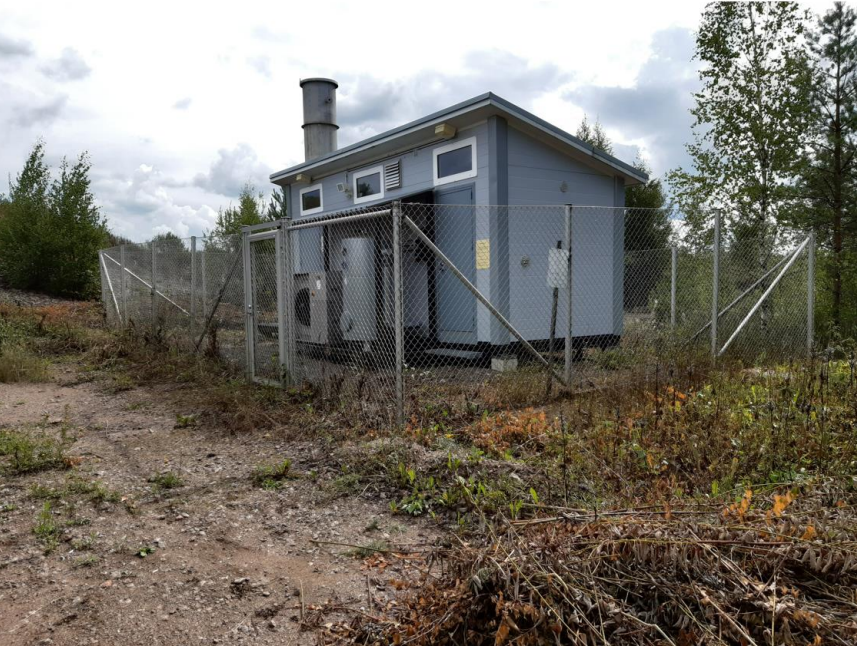Example of water monitoring and post-closure use of an old decommissioned landfill, Sammalsuo landfill
Monitoring and post-closure use of a decommissioned landfill
Sammalsuo is a municipal waste landfill owned by the City of Kouvola. While the site was operational, it was used for tipping mixed municipal waste and composting sewage sludge. The surface area of the landfill is approx. 4.3 ha and total capacity approx. 398,000 m3. The landfill started operating in 1958 and was closed down in 1998. The decommissioning work was completed in late 2002. The Government decision on landfills (861/1997) was not applied when building the capping structures as the environmental permit had been granted before the decision entered into force. The leachate from the landfill site is directed to the city’s wastewater treatment plant.
The capping structure specified in the plan was put out to tender, and Maansiirto Veli Hyyryläinen Oy was selected as the contractor. As the contract work started, the contractor proposed that a golf course be built on top of the capping structure. The plans were negotiated and approved by both the municipality and the government.
Bogey Golf Oy signed a lease on the site, and a golf course was built on top of the capping structures, taking into account both user safety and the integrity of landfill structures. The open nine-fairway, par 3 course was completed in 2003 and is particularly suitable for beginners. Clean stormwaters from the landfill and the adjacent Rail and Road Terminal site are collected into a sedimentation basin and used to irrigate the lawns of the golf course.
Photo: Bogey golf on the Sammalsuo landfill

Photo: Players at the Bogey golf course set up on top of the Sammalsuo landfill
Structural layers:
The following surface layer structures were built in Sammalsuo landfill:
- Top soil layer 0.3 m
- Protective layer 0.5 m
- Geotextile filter
- Drainage layer 0.3 m
- Impermeable layer 0.5 m
- Intermediate cover 0.2 m
A gas collection pipe system was installed in the emplaced waste, and no separate gas drainage layer was built. The gases are directed to a gas burner.
Post-closure monitoring
Water monitoring
Water monitoring in the decommissioned landfill of Sammalsuo is carried out following a monitoring plan updated in 2005. At that time, operational monitoring was replaced by post-closure monitoring. Samples are taken twice a year, in spring and autumn. The samples are collected by a certified technician and analysed in an accredited laboratory. There are four sampling locations for surface water, five for groundwater and one for leachate.
The surface water and leachate samples are tested for the following parameters:
- flow
- temperature
- oxygen
- electrical conductivity
- colour, cloudiness
- pH
- CODcr
- BOD7
- Total nitrogen
- Ammoniac nitrogen
- Total phosphorus
- Chloride
- Bacteria
The groundwater samples are tested for the following parameters:
- electrical conductivity
- ammoniac nitrogen
- bacteria (total coliform, total thermally resistant coliform)
- iron
- manganese
- pH
- chloride
- colour
- sulphate
- oxygen
Every three years, more extensive sampling from groundwater points and one surface water point is carried out in the autumn. These samples are tested for the following, in addition to the parameters listed above:
- chromium (total chromium and chromium-6 separately)
- nickel
- cadmium
- lead
- mercury
- aluminium
- copper
- arsenic
- AOX
- phenols

Photo: Sammalsuo landfill groundwater sampling point
Gas monitoring
The landfill has a burner for gas treatment. The system was completed in 2001. The operation of the gas collection installation and the burner is monitored regularly, and measurements are taken monthly. The recorded operating parameters of the landfill gas plant include operating hours, gas flow, total pumping volume and fuel efficiency. The shares and concentrations of methane, carbon dioxide and oxygen are analysed in the collected gas. Measurements are carried out separately for each gas well, making it easier to monitor the operation of the gas pipes and the installation as well as the need for maintenance.



